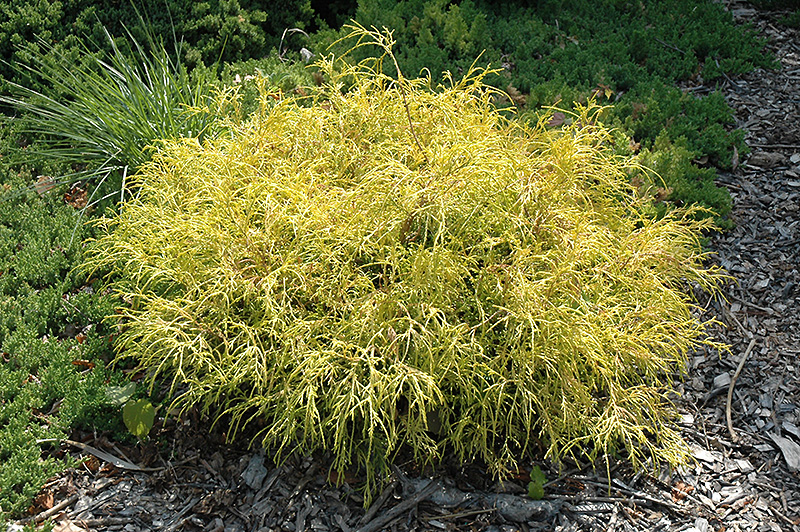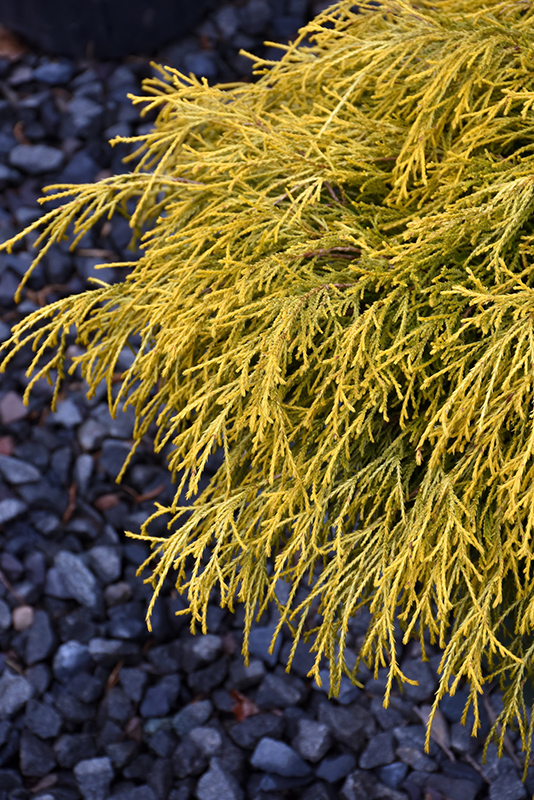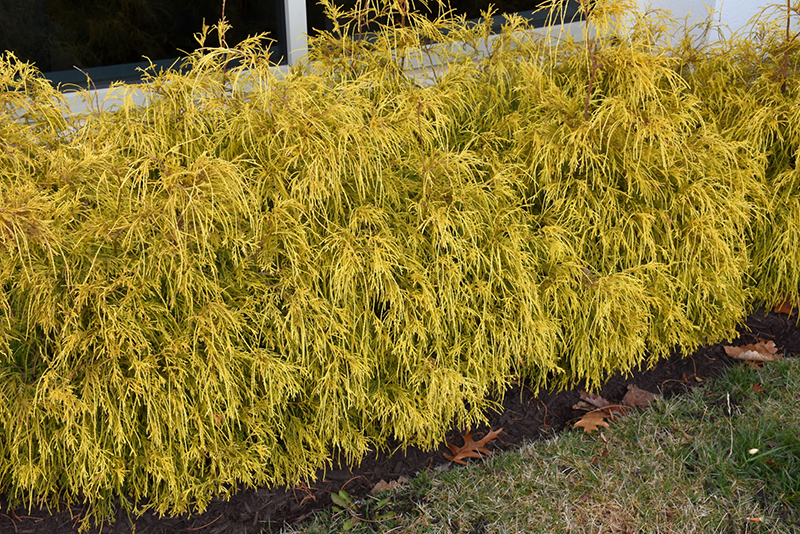Height: 7 feet
Spread: 6 feet
Sunlight:
![]()
![]()
Hardiness Zone: 4
Other Names: Japanese Falsecypress, Sawara Falsecypress
Description:
A beautiful landscape evergreen with sprays of fine threadlike leaves that emerge a bright gold and hold their yellow color well into the heat of summer, forms a compact haystack shape over the years, an excellent color accent shrub for the garden
Ornamental Features
Golden Charm Falsecypress is a dwarf conifer which is primarily valued in the landscape or garden for its distinctively pyramidal habit of growth. It has attractive gold evergreen foliage. The threadlike sprays of foliage are highly ornamental and turn yellow in the fall, which persists throughout the winter.
Landscape Attributes
Golden Charm Falsecypress is a multi-stemmed evergreen shrub with a distinctive and refined pyramidal form. It lends an extremely fine and delicate texture to the landscape composition which can make it a great accent feature on this basis alone.
This is a relatively low maintenance shrub. When pruning is necessary, it is recommended to only trim back the new growth of the current season, other than to remove any dieback. It has no significant negative characteristics.
Golden Charm Falsecypress is recommended for the following landscape applications;
- Accent
- General Garden Use
Planting & Growing
Golden Charm Falsecypress will grow to be about 7 feet tall at maturity, with a spread of 6 feet. It tends to fill out right to the ground and therefore doesn't necessarily require facer plants in front, and is suitable for planting under power lines. It grows at a slow rate, and under ideal conditions can be expected to live for 50 years or more.
This shrub does best in full sun to partial shade. It prefers to grow in average to moist conditions, and shouldn't be allowed to dry out. It may require supplemental watering during periods of drought or extended heat. It is not particular as to soil type, but has a definite preference for acidic soils. It is highly tolerant of urban pollution and will even thrive in inner city environments. Consider applying a thick mulch around the root zone in winter to protect it in exposed locations or colder microclimates. This is a selected variety of a species not originally from North America.



